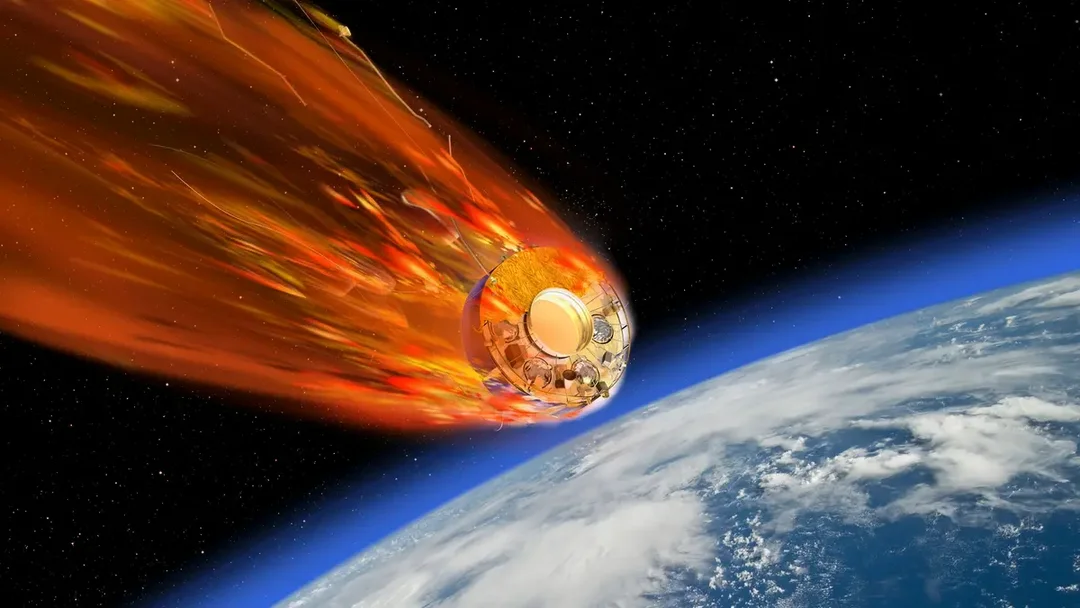
Falling Satellites: A Growing Threat to Earth’s Atmosphere?
The increasing number of satellites orbiting Earth, while crucial for modern communication and technology, presents a growing environmental concern. As these satellites reach the end of their lifespan, they re-enter the atmosphere, burning up and releasing various chemical compounds, including alumina, lithium, and potassium. This "satellite air pollution" is raising alarms among scientists about its potential impact on the Earth's atmosphere, particularly the ozone layer.

Recent studies highlight that the incineration of satellites, primarily composed of aluminum, produces aluminum oxide (alumina), which could trigger ozone depletion and alter Earth's ability to reflect sunlight. With the exponential growth of satellite launches, driven by companies like SpaceX and Amazon's Project Kuiper, the number of re-entries is expected to increase dramatically. Some experts estimate as many as 25 to 50 re-entries per day by 2035. This surge in satellite re-entries raises critical questions about the long-term effects on our planet's atmosphere.
Researchers are now actively studying stratospheric pollution caused by these re-entries. One such study involved a team of European scientists who chased the re-entry of ESA's Salsa Cluster satellite in 2024 with an aircraft fitted with 26 cameras. The data collected from this observation campaign revealed the release of lithium, potassium, and aluminum during the burn-up. However, the team stated "We don't have the data yet to be able to say how much of it turns into the aerosol," This initiative underscores the efforts to gather comprehensive data on the chemical processes occurring during satellite fragmentation and incineration.
While satellite re-entries may appear as captivating "shooting stars," their impact on the atmosphere warrants serious consideration. As Jonathan McDowell of the Harvard & Smithsonian Center for Astrophysics notes, maintaining large satellite constellations necessitates launching and decommissioning numerous satellites daily.
The environmental laws primarily focus on near-Earth pollution, leaving a gap in addressing the pollutants released during satellite re-entries. As the amount of satellite material increases and drifts higher into the atmosphere, atmospheric scientists have a sense of déjà vu because they have noticed that issues like soot and chemical exposure jeopardize the ozone layer and possibly change the global climate!
Several factors contributing to this issue. For instance, rockets used to power many launches burn more inefficiently the higher rockets climb. That leads to soot pollution, or black carbon, can have a warming affect 500 times greater than the same amount at ground-level, according to a 2022 study. Also, satellites of different material can leave behind potentially hazardous material, even the 2023 study for the first time put a number on the amount of stratospheric aerosols already containing launch- or reentry-related particles, finding that it’s 10% and likely to grow with the industry.
Scientists are working to improve the data of spaceflight's impact on the atmosphere as ESA plans to launch a mission in 2027 that would follow a satellite’s final descent into the atmosphere and sniff out what’s left in its wake. This action shows how committed to figuring how much debris that is left is still in the atmosphere and the effects of it.
Despite the growing concerns on both the effects and the causes behind the issues, most companies appear to be prioritizing more pressing matters. However, the FCC does have regulations in favor with satellites burning up since they said that it is considered a successful disposal for spacecraft in or passing through low-Earth orbit as atmospheric reentry no later than five years following the end of their mission.
The question remains: Are we overlooking a potentially significant threat to our atmosphere in the pursuit of advanced technology? What measures can be implemented to mitigate the environmental impact of satellite re-entries? Share your thoughts and concerns in the comments below.